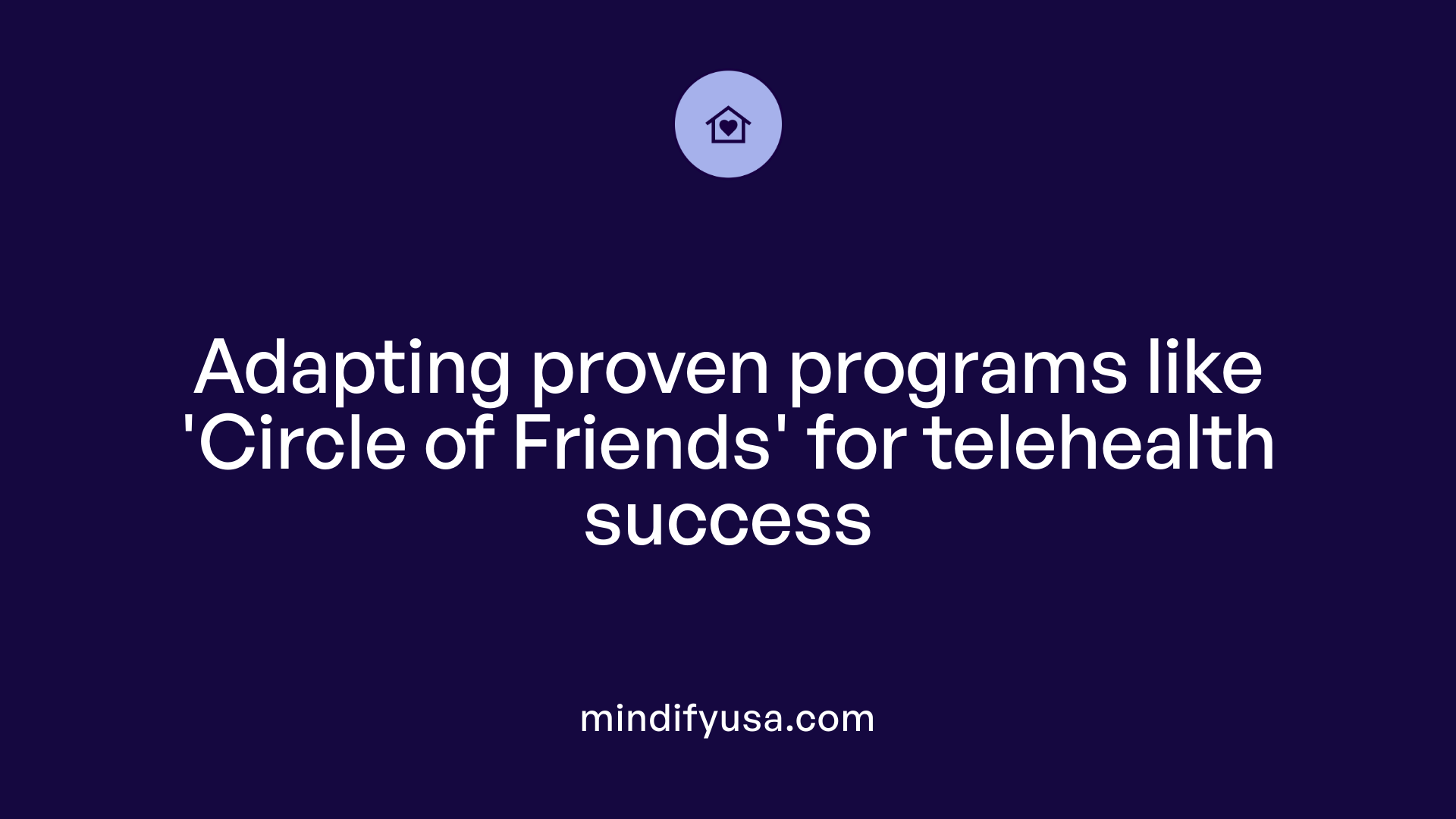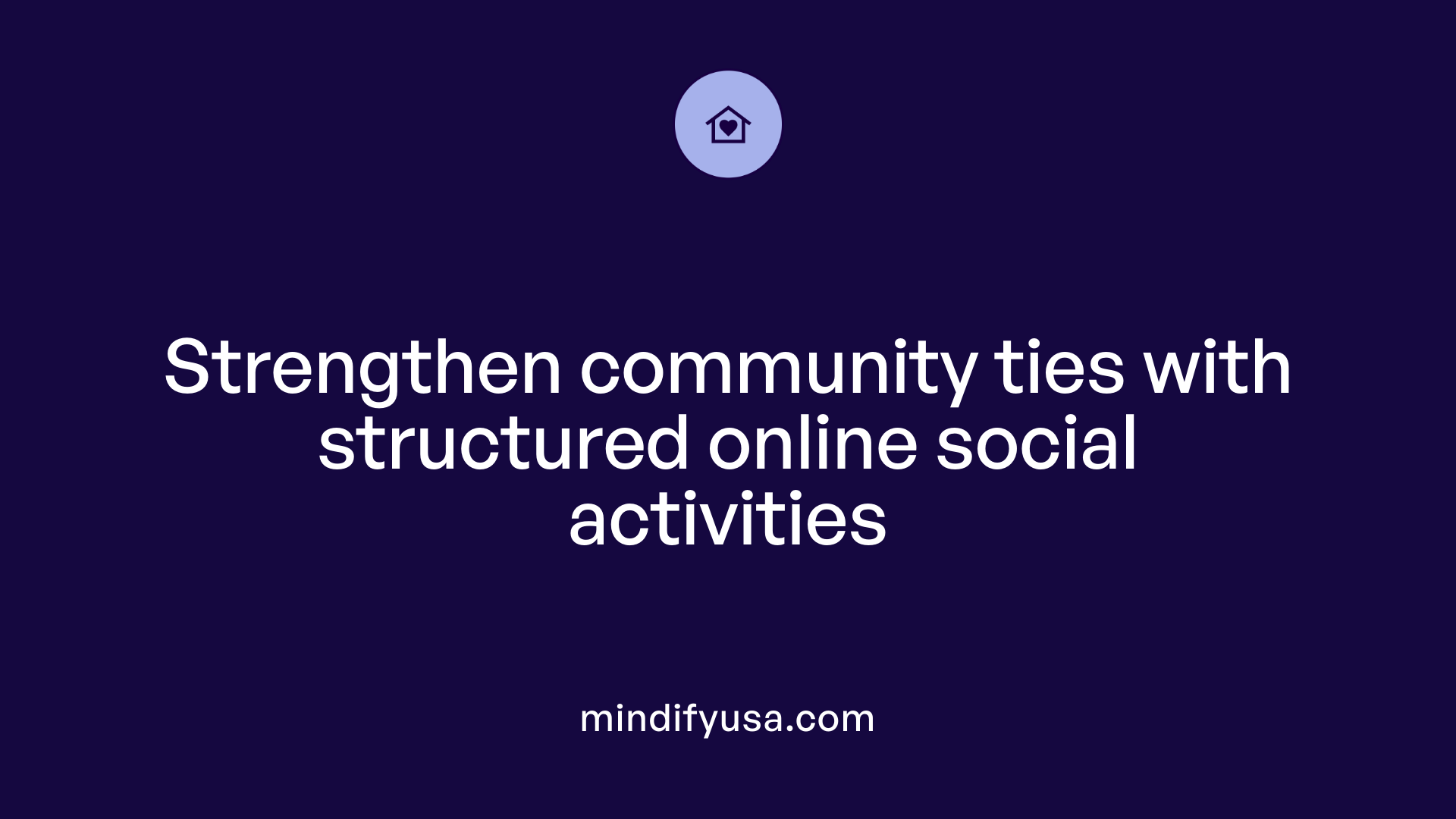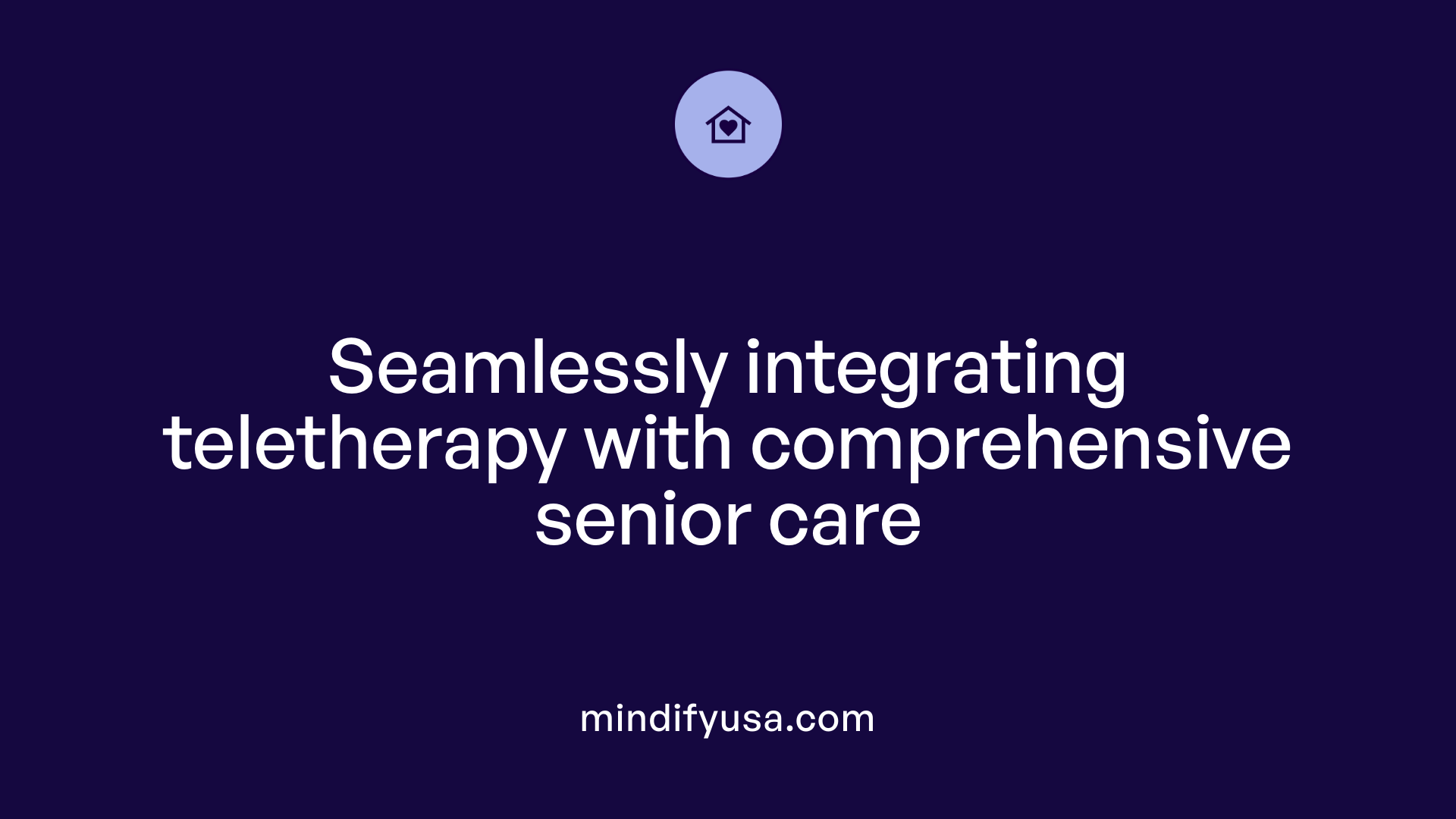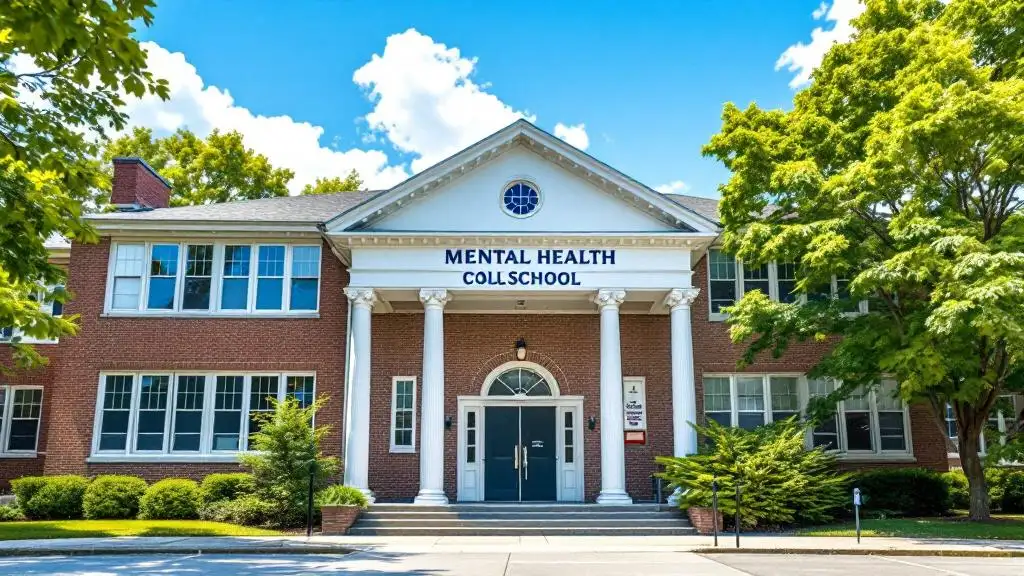Understanding the Impact of Social Isolation in Older Adults
Social isolation is a pervasive issue affecting approximately 25% of adults aged 65 and over, with serious implications for both mental and physical health. Factors such as retirement, mobility issues, loss of loved ones, and shrinking social networks contribute to this growing concern. The consequences include increased risks of dementia, depression, cognitive decline, and higher mortality rates. During crises like the COVID-19 pandemic, social distancing measures have exacerbated these vulnerabilities, underscoring the need for innovative, accessible solutions that promote social connection and mental well-being among seniors.
Adapting Evidence-Based Interventions to Telehealth Models
 The 'Circle of Friends' program is a well-established psychosocial intervention designed to help older adults socialise more effectively and reduce feelings of loneliness. During the COVID-19 pandemic, efforts were made to adapt this program to a telehealth format, ensuring continued social engagement despite barriers like transportation, mobility, and health risks.
The 'Circle of Friends' program is a well-established psychosocial intervention designed to help older adults socialise more effectively and reduce feelings of loneliness. During the COVID-19 pandemic, efforts were made to adapt this program to a telehealth format, ensuring continued social engagement despite barriers like transportation, mobility, and health risks.
In a telehealth setting, facilitators initiate calls with both participants and their caregivers to prepare them for virtual sessions. This preparation includes technical guidance and outlining activities to ensure meaningful participation. The program incorporates diverse activities such as inviting virtual guest speakers, sharing digital photos, and encouraging at-home projects which foster a sense of community and achievement even from a distance.
Structured exercise routines have been developed for in-home participation, often demonstrated through videos featuring chair exercises and strength training to promote physical health alongside social interaction. Additionally, therapeutic writing activities like diary or blog creation, paired with inspirational content shared by facilitators, offer emotional outlets and cognitive engagement.
Strategies and resources that help prevent social isolation through teletherapy include engaging in online support groups, participating in group therapy sessions, and joining peer support programs. Creative activities and training in digital literacy are crucial for overcoming technological barriers, empowering seniors to connect confidently.
Best practices for implementing teletherapy involve ensuring all technology is accessible, providing thorough training, and structuring sessions with engaging activities such as group discussions or interactive projects. Involving family members and caregivers often enhances participation, while ongoing evaluation helps refine approaches based on feedback and observed outcomes.
Telehealth programs support social bonds by promoting regular virtual interactions. These structured social activities, including narrative sharing, arts, and physical exercises, help seniors maintain emotional connections despite physical distancing. They also address sensory needs through adaptive technology, like hearing aids or mobility devices, ensuring more inclusive participation.
Research and pilot projects underline the effectiveness of these approaches. For example, a study during the pandemic revealed that telehealth initiatives reduced depression and loneliness among older adults significantly. The combination of community-based, technology-mediated interventions creates accessible, enjoyable, and sustaining social environments for seniors—an essential component in combating social isolation.
Enhancing Digital Engagement with Creative and Therapeutic Activities
 To foster social connections among older adults, digital interventions offer a range of engaging activities that support mental health and reduce feelings of loneliness. These include virtual arts and crafts sessions, narrative writing exercises, and collaborative projects that seniors can participate in from home.
To foster social connections among older adults, digital interventions offer a range of engaging activities that support mental health and reduce feelings of loneliness. These include virtual arts and crafts sessions, narrative writing exercises, and collaborative projects that seniors can participate in from home.
Virtual arts and crafts allow seniors to explore their creativity, share their masterpieces online, and connect with others through channels like video calls or dedicated social platforms. Narrative writing activities—such as maintaining diaries or blogs—provide a therapeutic outlet for self-expression, fostering emotional well-being and giving seniors a sense of purpose.
Exercise routines tailored for at-home participation can be accessed through online videos demonstrating chair exercises, strength training, or gentle stretches. These promote physical health and social interaction if done in group settings via video chats.
Therapeutic activities like diary or blog creation are not only beneficial for mental health but also serve as a way for seniors to share their stories, receive feedback, and feel more connected with peers. Facilitators often share inspiring content to motivate ongoing participation.
Digital tools such as videoconferencing, telephone calls, virtual pets, and socially assistive robots have proven instrumental in strengthening communication for seniors. These technologies help simulate social interactions, decrease loneliness, and create a sense of companionship.
Research highlights that teletherapy and online peer groups can significantly reduce social isolation. They provide mental health support, shared experiences, and social engagement that are crucial for well-being.
However, access to telehealth services remains a challenge. Barriers include physical impairments, limited digital literacy, lack of devices or reliable internet, discomfort with new technologies, and socioeconomic constraints.
Despite these challenges, combining creative activities with accessible digital platforms offers a promising approach to improve social connection, mental health, and quality of life for older adults.
| Intervention Type | Description | Benefits |
|---|---|---|
| Virtual arts and crafts | Online crafting sessions | Enhances creativity and social bonding |
| Narrative writing | Diaries, blogs | Supports emotional expression |
| Exercise routines | Yoga, strength training videos | Promotes physical health |
| Teletherapy & peer groups | Video calls, support groups | Reduces loneliness and mental health issues |
| Digital creative tools | Art apps, storytelling platforms | Builds digital confidence |
For more information, search terms like 'Digital creative activities for seniors' can provide additional resources and ideas for promoting social connection through technology.
The Role of Structured Social Activities and Community Support

What strategies and resources can help prevent social isolation in seniors through teletherapy?
Community support initiatives play a vital role in keeping seniors socially engaged. Programs like virtual senior centers offer live classes, arts and crafts, and discussion groups that foster social interaction. Technology support services help seniors use devices effectively, making it easier for them to join online activities. Additionally, active participation in online group activities—such as support circles or community programs—creates a sense of belonging.
These resources address common barriers by providing structured activities tailored to seniors’ needs and abilities. They also promote digital literacy, empowering older adults to maintain connections with family, friends, and peer groups.
How do telehealth programs support social connection among seniors?
Telehealth programs go beyond medical care; they facilitate regular virtual social interactions that help combat loneliness. Through video conferencing and group therapy, seniors can participate in structured activities, share experiences, and build relationships from their homes.
By offering these programs regardless of physical location, telehealth reduces transportation barriers and makes social participation more accessible. This approach ensures that vulnerable seniors, including those in rural or non-metropolitan areas, remain connected and engaged.
| Resource Type | Description | Benefits |
|---|---|---|
| Community-based programs | Virtual senior centers, online support groups | Foster social engagement and community belonging |
| Technology support services | Device training, helpdesk support | Increase digital self-efficacy and participation |
| Structured activities | Group therapy, arts, and discussion groups | Promote mental health and social bonds |
This integrated approach—combining community resources, digital literacy, and structured telehealth activities—helps reduce social isolation in seniors. Supporting these efforts contributes to healthier, more connected aging.
Personalized Approaches and Overcoming Barriers
What best practices for implementing teletherapy to combat senior social isolation?
Effective teletherapy for older adults involves several practical strategies. First, designing user-friendly interfaces that accommodate sensory and cognitive limitations makes technology easier to navigate. Personalized training sessions help seniors become comfortable using devices and platforms, boosting confidence and engagement.
Involving family members or caregivers provides additional support and encouragement. Regular check-ins and outcome assessments allow clinicians to tailor interventions, ensuring they meet individual needs and preferences. These practices help create a supportive, accessible environment that promotes sustained participation.
What barriers do older adults face in accessing telehealth services?
Many seniors encounter obstacles such as sensory impairments, including hearing and vision loss, which can hinder effective use of digital tools. Low familiarity with technology and digital literacy gaps may prevent them from fully engaging with telehealth platforms.
The digital divide remains a significant issue, often correlated with socioeconomic factors and geographic location, particularly for those living in rural or non-metropolitan areas. Financial constraints can also limit access to necessary devices or reliable internet connections.
Addressing these challenges requires tailored solutions, like adaptive technologies, device support, and targeted education, to ensure all older adults can benefit from telehealth services and social connection opportunities.
Policy and Future Directions in Senior Telehealth
 Supporting the expansion of telehealth services for older adults requires thoughtful policy considerations. Governments and health organizations should focus on improving digital access for seniors, especially those in rural or underserved areas, to bridge the digital divide.
Supporting the expansion of telehealth services for older adults requires thoughtful policy considerations. Governments and health organizations should focus on improving digital access for seniors, especially those in rural or underserved areas, to bridge the digital divide.
Standardized regulations are essential to ensure safe, secure, and effective teletherapy practices. These include data privacy protections, licensing standards, and guidelines for quality care. Facilitating digital literacy among seniors through community programs and education is vital in making these technologies accessible and usable.
Investments in research are necessary to evaluate the outcomes of telehealth interventions and refine best practices. Collaboration between policymakers, healthcare providers, and community organizations can promote sustainable models that prioritize social connectedness and mental health.
Overall, policy support in these areas will enhance telehealth's role in reducing loneliness and promoting well-being among the elderly.
Integrating Teletherapy into Broader Senior Care Strategies
 Teletherapy has become a vital part of comprehensive care for older adults, particularly during the COVID-19 pandemic. It complements in-home care by providing social interaction, mental health support, and health education without the need for physical visits.
Teletherapy has become a vital part of comprehensive care for older adults, particularly during the COVID-19 pandemic. It complements in-home care by providing social interaction, mental health support, and health education without the need for physical visits.
Combining teletherapy with in-home services ensures seniors receive personalized attention while maintaining safety and convenience. Caregivers can be trained to assist with technology use and facilitate virtual sessions, making it easier for seniors to stay connected.
Community outreach programs play a crucial role by promoting digital literacy and providing access to devices and internet services. Initiatives like digital training workshops and distributing user-friendly tablets help bridge the digital divide, especially for those in rural areas or with mobility limitations.
Together, these approaches create a network of support that addresses social isolation, mental health, and chronic care management, making teletherapy a cornerstone of holistic senior care.
A Multi-Faceted Approach to Reducing Senior Social Isolation
Teletherapy emerges as a powerful, adaptable tool capable of bridging social gaps for older adults. When combined with community engagement, personalized support, innovative technology, and supportive policies, it offers a comprehensive strategy to reduce loneliness, improve mental health, and promote active aging. As we move forward, embracing these solutions can help build resilient, connected communities where seniors thrive both socially and emotionally.
References
- Using Telehealth Groups to Combat Loneliness in Older Adults ...
- Online Therapy for Social Isolation: A Guide for Older Adults
- Association of Social Isolation and Loneliness with Telehealth Use ...
- Leveraging Telehealth and RPM to Combat Social Isolation
- Supporting Vulnerable Older Adults With Telehealth Through ...
- Using Telehealth Groups to Combat Loneliness in Older Adults ...
- The use of digital technology for social wellbeing reduces social ...
- Reducing Social Isolation For Seniors at Home - Americare






































































































